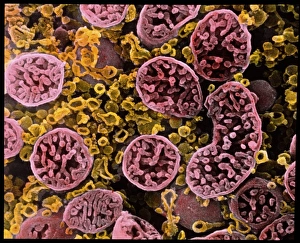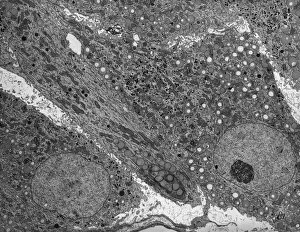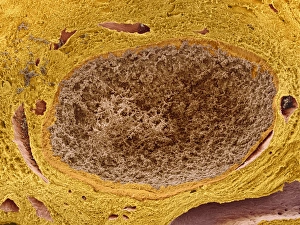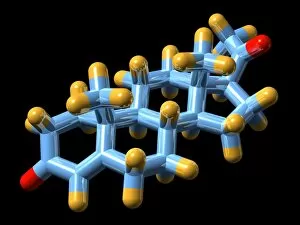Progesterone Collection
Progesterone, often referred to as the "pregnancy hormone, " plays a crucial role in the female reproductive system
All Professionally Made to Order for Quick Shipping
Progesterone, often referred to as the "pregnancy hormone, " plays a crucial role in the female reproductive system. This hormone is responsible for maintaining and preparing the uterus for pregnancy. A coloured scanning electron microscope (SEM) image of mitochondria in ovarian cells reveals the intricate structures that enable progesterone production. These tiny powerhouses are essential for synthesizing this vital hormone. In addition to its role in pregnancy, it also regulates various aspects of the menstrual cycle and prepares the body for potential conception. It helps thicken the uterine lining, making it an ideal environment for implantation. Unfortunately, certain conditions can disrupt normal progesterone levels, leading to complications such as prolapsed uterus or displaced pelvic organs. A sagittal section of a pelvis displaying a prolapsed uterus serves as a reminder of how important hormonal balance is within our bodies. Contraception methods offer women options to control their reproductive health effectively. Four common methods include hormonal birth control pills containing synthetic versions or combined hormones like estrogen and progestin. Understanding female reproductive anatomy is crucial when discussing topics related to progesterone and its functions. Detailed illustrations on white backgrounds provide clear visual representations of this complex system. During pregnancy, a sagittal view showcases how pelvic organs shift due to an expanding uterus housing new life within it. The outline indicates their usual position before being displaced by fetal growth—a testament to nature's incredible adaptability. However, not all pregnancies progress smoothly; advanced cervical cancer can pose significant threats if left undetected or untreated. Sagittal and vaginal views highlight these concerning developments while emphasizing the importance of regular screenings and early intervention. Whether presented against blue or white backgrounds, depictions of female reproductive anatomy serve as educational tools that empower individuals with knowledge about their bodies' inner workings.









